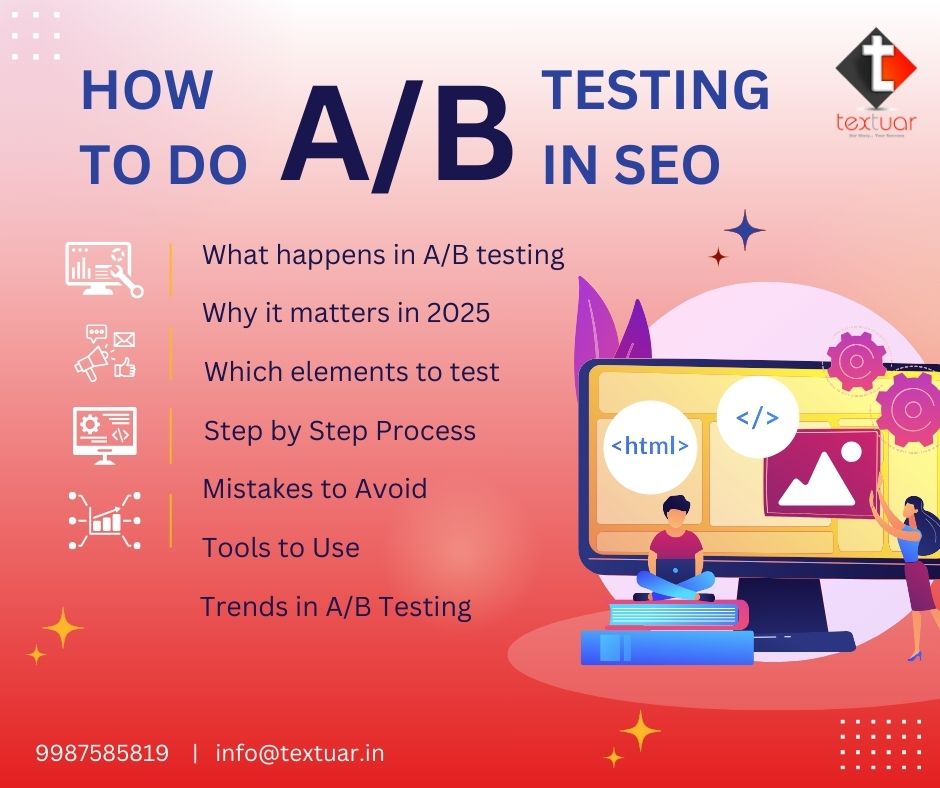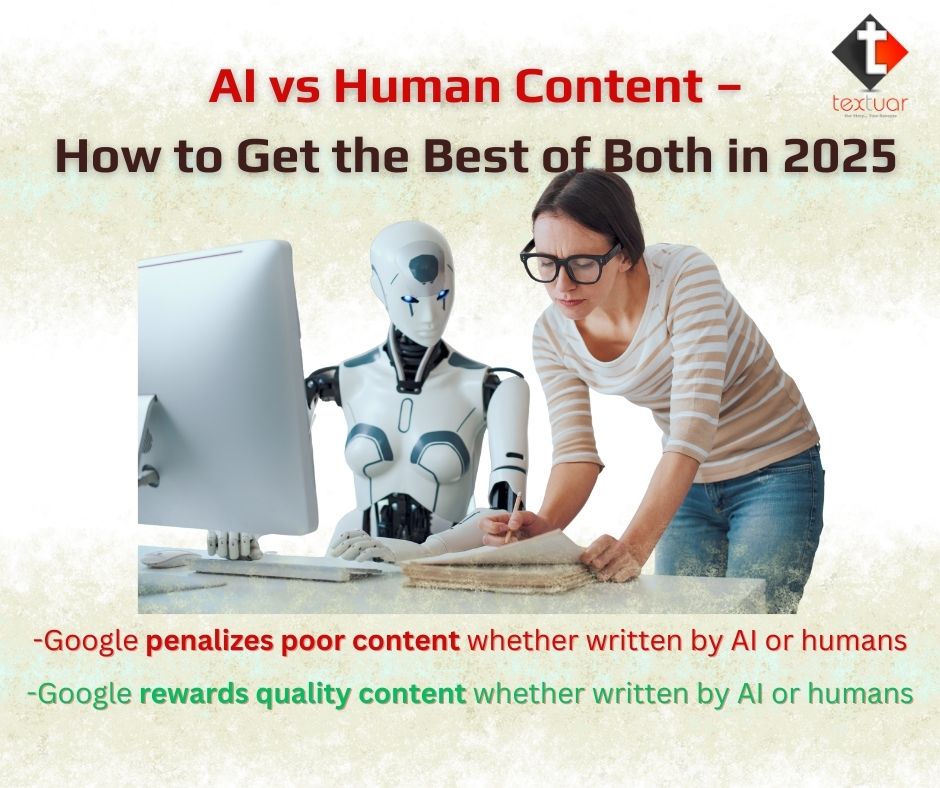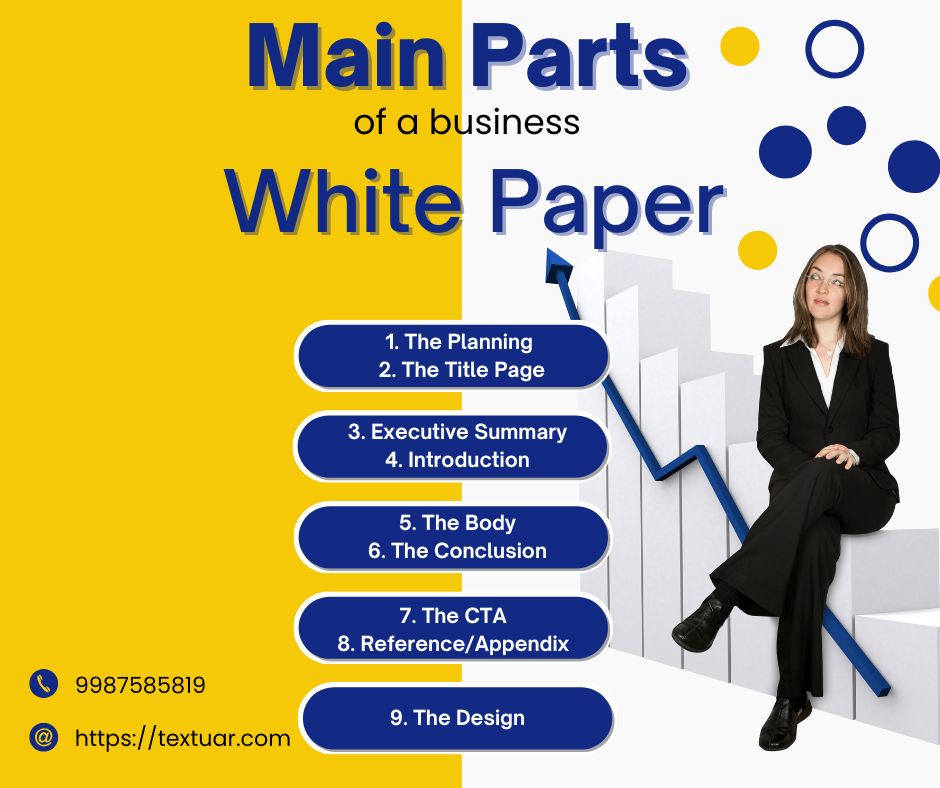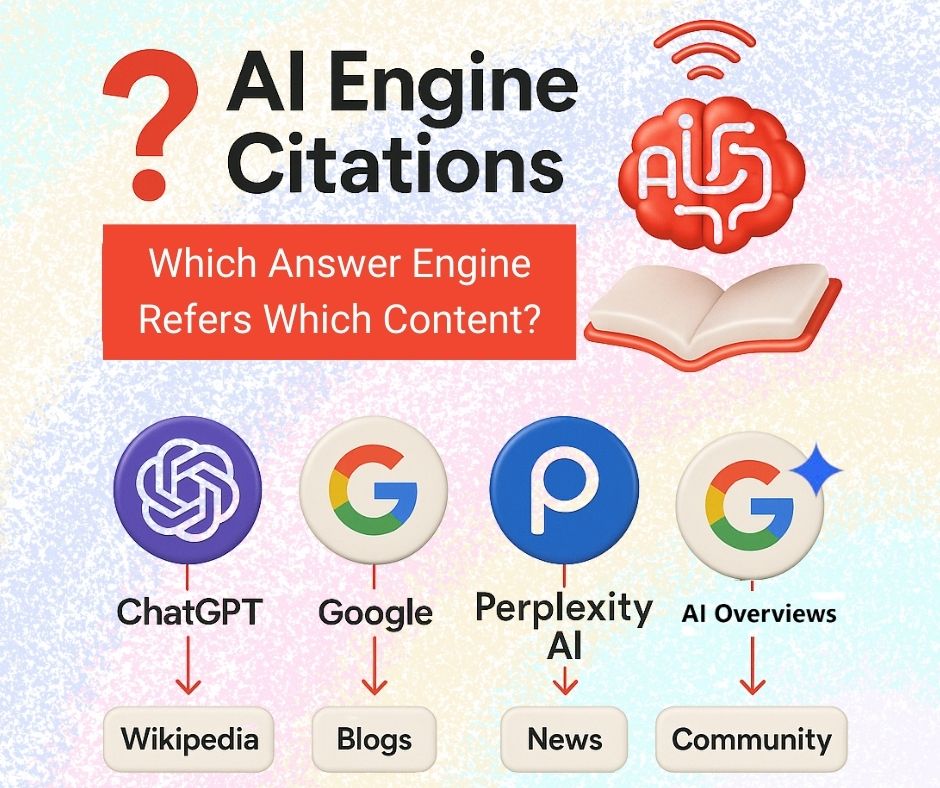📌 TL;DR – Quick Summary
In this post, we will dive into –
-what SEO A/B testing means in 2025,
-what changes in the landscape you need to keep in mind,
-the step-by-step process,
-common pitfalls,
-how to check, and
-advanced trends.
By the end, you should have a clear roadmap to run SEO A/B tests effectively and get meaningful gains.
SEO is no longer just about keywords, backlinks, or on-page tweaks. As search engines evolve and as user behavior changes, we need to adapt fast. Plus, the massive burst of generative AI and machine learning has reshaped how content is served for gaining site traffic and AI citations. In such a scenario, content marketers need stronger validation for every decision.
That is where SEO A/B testing (also called split testing) becomes indispensable in 2025.
What is SEO A/B Testing?
SEO A/B testing (or split testing) refers to running experiments on website content or settings to see how changes influence organic search performance. Instead of testing just user conversion (CRO), SEO A/B tests measure metrics like organic traffic, rankings, click-through rate from search engine results pages (SERPs), and dwell time / engagement metrics from organic visitors.
The idea is to use statistical significance to validate impact on rankings and traffic.
What happens in SEO A/B Testing?
The typical paradigm: you pick a group of pages (or variants of a page), make a change (title tag, meta description, content structure, internal linking, etc.), and compare their performance with a control group over time (this is an unchanged page or original page).
An important point here is to avoid Google penalties by making sure that only one page version is live.
Why Is it More Important Than Ever in 2025?
With AI citations and organic SERP, marketers cannot afford to do guesswork with campaign performance. Rather, they should rely on data-driven decisions. And A/B testing offers this significant advantage to SEOs. With it, they can prevent wasted efforts on ineffective updates and tweaks to the website.
Here are some reasons why SEO A/B testing is increasingly essential now:
a. Search and Ranking Volatility
Google’s core algorithm updates are more frequent, and machine learning-driven components (like helpful content, EEAT, indexing changes) make performance less predictable on assumptions alone. What worked last year may not work now. Hence, such a testing exercise is crucial.
b. User Behavior and SERP Features are Changing
Marketers need to factor
-featured snippets,
-generative answer boxes,
-mobile first indexing, and
-voice/AEO (Answer Engine Optimization)
Here, we see that small changes (e.g. meta description wording, structured data) may yield a large impact in SEO A/B testing.
c. AI and Generative Search / GEO / AEO
As generative AI tools and AI-powered search like AI Overviews evolve, content needs to be optimized not just for traditional search but for how AI systems index, summarize, and cite sources. Experiments help test new content formats and structures.
d. More Available Tools and Better Data Access
There are more platforms and software now that facilitate SEO split-testing. You can now get better statistical tools and do more granular analytics. Also, better integration with CMS / technical stacks means that the barrier to conducting rigorous experiments is low in 2025.
e. Better ROI and Less Guesswork
Changes in title tags, schema markup, internal linking, or content layout might seem trivial, but can lead to double-digit percentage improvements in traffic or CTR when tested properly. Without A/B testing, even high-impact changes may backfire.
Now that you know about its immense importance in SEO, let us see what the key components of good A/B testing are.
Which Elements to Test for A/B Testing?
SEO A/B testing involves comparing variations of web elements to determine which performs better in organic search. By testing specific components as seen below, marketers can make data-driven decisions to enhance visibility, engagement and conversions:
| Element to Test | Purpose | Examples of Variations | Primary Metrics Impacted |
| Title Tags | Improve visibility and click-through rates (CTR) from SERPs. | Test keywords, phrasing, length (e.g., benefit-focused vs. feature-focused titles). | Organic rankings, CTR |
| Meta Descriptions | Increase CTR by compelling users to click. | Experiment with calls-to-action (CTAs), urgency, or descriptive phrasing. | CTR from SERPs |
| Content Layout | Enhance user engagement and reduce bounce rates. | Adjust image placement, heading structures, or CTA button designs. | Bounce rate, time on page, conversions |
| Internal Linking Structure | Improve navigation, link equity distribution, and user experience. | Test anchor text variations (e.g., keyword-rich vs. natural language) or link placement within content. | Click-through rates, user engagement, SEO authority |
| Call-to-Action (CTA) Placement | Boost conversion rates by optimizing CTA visibility and effectiveness. | Test CTAs above vs. below the fold, or variations in button color, size, and text. | Conversion rates, engagement |
What Points to Check Before Starting the Test?
As a website owner, you need to keep these points in mind before you consider going for SEO A/B testing.
- Do you have enough traffic / impressions for the test to be meaningful?
- Does the update you are making have any SEO impact? (Titles, meta, content sections, internal link structure)
- Do your test and control pages match up?
- Have you got tools in place to measure outcomes accurately?
- Can you avoid external changes of any kind during the test (site redesigns, CMS migrations, large product changes)?
- Do you comprehend indexation & recrawl delays?
How to do SEO A/B Testing?
Now that you know what elements to test, it is time to learn how to properly execute these experiments. A structured methodology will help you ensure your A/B tests yield statistically significant and reliable results. Here is a step-by-step guide.
| Steps | What to do | Why it matters |
| Clearly define the hypothesis | -Don’t chase generic goals like “Increase organic traffic.” Instead, hypothesize clear, such as, “Change title tag prefix from brand name to keyword to improve CTR by 10% across 50 blog posts.” | -It allows you to isolate and measure results meaningfully. |
| Know the Test and Control Groups | -Choose similar pages (by traffic or content topic) for the test and control groups. The control group should remain unchanged. | -Avoids bias, ensuring that differences in performance between the two are because of your change and not external factors. |
| The Variables to Test | -Variables could be title tags, meta descriptions, internal links, content headings, structured data, and image lazy loading. Change only one major variable that will be quickly grasped by readers (or clearly isolate variables) per test. | -If you change more than one thing, you might not come to know which variable caused the observed result. |
| Metrics and Duration Determined | -Metrics: organic sessions, impressions, CTR, rankings, dwell time. Duration should be long enough – usually several weeks to months, depending on traffic and volatility. Also account for times when search engines update their indices. | -SEO effects often have delays. Proper duration is necessary for reliability. |
| Run the Test | -Changes are made to the test pages or experiment applied through tags/CMS. Do not make changes elsewhere that may affect the test. Make sure everything else stays the same (e.g. internal links, external links pointing to other posts). | -To isolate the variable. Keep external influences to a minimum. |
| Collect and Test Data | -Analytics Tools, log files etc. Track the test and control group over time. Focus on short-term metrics (CTR, impressions) and longer ones (traffic, stability of rank). | -Data allows you to judge the significance of your experiment. |
| Analyze Results and Decide | -Use statistical significance tests to see if the improvements are still holding true. Then decide to roll out or roll back. | -This is so that you don’t respond to noise or fluctuations in the short run. |
What are Common SEO A/B Testing Mistakes and How to Avoid Them?
Although you may have the best plan, various things may still go wrong. Here are some of those issues and how you can avoid them:

a. Small Sample Size / Short Duration
Drawing conclusions too early yields results that are incorrect.
Fix: Estimate the sample size needed, run for the appropriate length of time. Use your tools or calculators for properly determining the size for testing. Marketers would go with testing with around 30,000 pageviews or more to see a discernible difference.
b. Seasonality or External Events
A holiday season, trending news, an algorithm update, etc., can bring a holding penalty.
Fix: Use control groups, look at results across multiple periods, compare year on year when applicable.
c. Poor Page Matching for Control vs Test Pages
If test pages are very different (in age, authority, content type) from control pages, the comparisons may be unfair.
Fix: Carefully segment pages such as by subject (or authority) and by age. Perhaps, you could stratify your page “buckets”.
d. Confounding Changes during SEO A/B Testing
Other site-wide changes (site redesign, updates to the CMS system, or simply refreshing contents) occurring at the same time can distort the outcome of your tests.
Fix: Do not make two large parallel changes. Write down what other changes you have made; note them in your analysis if cannot avoid them.
e. Failure to Re-index/ Crawl Delays
Even after you’ve altered the content or changed the title, a search engine may take a long time to pick up the new pages. The first few spikes might not reflect any long-lasting positive adjustments.
Fix: Allow for a time lag; inspect index status or submit to the search console. Also, monitor over a period of time.
f. Not Validating Statistical Significance
It is a mistake to leap to conclusions based on tiny movements.
Fix: require dependable trends (not just spikes), put the statistical tests to use (e.g. -values, confidence intervals).
Which Tools and Platforms to Use in 2025 for SEO A/B Testing
| Tool | Best For | Key Features | Implementation Method | Pricing Model |
| SearchPilot | Enterprise-level SEO A/B testing | Server-side testing, neural network algorithms, rapid traffic shift detection (14 days) | Server-side | Custom quote-based |
| seoClarity | Data-driven teams requiring statistical rigor | Integrates Google Search Console data, Bayesian models, advanced segmentation and reporting | Server-side or Client-side | Enterprise custom pricing |
| SplitSignal | Businesses seeking minimal developer dependency | Client-side JavaScript, Google’s Causal Impact model, tests meta tags/content/structural changes | Client-side | Pilot program ($5K for 10 tests) |
Emerging Trends in SEO A/B Testing in 2025
In order to keep ahead of the pack, here are a few different ways you might approach:
a. AI-Assisted and Reinforcement Learning Experiments
Using LLMs or RL methods to generate content variants or test multiple hypothesis. An example is the frameworks that generate headline/content variants using AI, test them, then learn which is better for SEO and marketing.
b. Generative / AI-Driven Search Engines and GEO / AEO
Marketers will have to optimize not just for the classic search results but also for
-AI Overviews,
-Voice search
-Knowledge panel, and
-Answer boxes.
You should test content formats that are spoken as well as written.
c. Personalization and Segment Testing
Do SEO A/B testing for different audience segments (geography, device type, new vs returning users) to see differential effects.
d. Multivariate Testing
Although more difficult to interpret, when you have enough traffic, you can test combinations of changes (e.g. title + heading + internal link change) together to see interaction effects.
What Metrics to Track to Measure Success in SEO A/B Testing?
- Organic impressions (in SERP)
- Click-Through Rate (CTR) from search results
- Ranking positions for target keywords
- Organic traffic / sessions on the affected pages
- Bounce rate, dwell time, avg time on page, user engagement (scroll depth)
- Conversion metrics if content was also intended for lead generation, product signup etc.
- Indexed page count / coverage (to see if new pages/variants are properly crawled)
Also track any negative signals: spikes in bounce rate, drop in ranking for non-targeted keywords, etc.
Why Choose Textuar for SEO A/B Testing?
The data-driven approach and expert methodology from Textuar is what enables you to unlock the full potential of your SEO campaigns. The result is campaign parameters that are genuinely precise, reliable, and directly translate into visible improvements in organic traffic. Here are some reasons to pick our content and SEO agency for A/B testing for your website.
a. Proven Testing Framework
We conduct a completely rigorous testing process that is also statistically sound in design. This serves to critically evaluate how different SEO factors work in conjunction with each other. It helps check whether a change we make benefits your site.
b. Actionable Data Insights
Our experts draw out the clear and simple insight from the data we gather. We will then recommend a way forward for your SEO work that results in a win and is effective in optimizing ROI.
c. SEO A/B Testing Tailored to Your Goals
We develop custom tests designed to help you reach your specific business goals, whether they are to increase click-through rates, move higher in Google ranking or obtain more organic conversions.
d. Future-Proof Your Strategy
Our testing process will not only accommodate the rise of new trends, but also build them into your strategy from an early stage. For instance, we know that AI-driven search and user intent replaces keyword research as a marker for successful search. Hence, we incorporate changes that delivers success for your SEO campaigns.
Conclusion
SEO A/B Testing is a crucial approach to test your campaign against the shifts in search landscape. With this, you will come to know what elements will be accepted better by search engines and readers. As a result of this exercise, you can expect better results from your SEO campaigns. This blog took a look at what is it and how to do it, along with common mistakes to avoid.
We conclude by inviting you to engage with Textuar to come up with strong SEO campaigns. It will be meant to improve organic search rankings and better citations on ChatGPT and AI Overviews.
FAQ
What is SEO A/B testing?
SEO A/B testing is the comparison of two pages to see how it affects the site’s organic traffic, rankings and click-through rate. Using data makes it possible to improve SEO.
Why is SEO A/B testing important in 2025?
Frequent Google updates and generative AI applied to search results make it vital to do this experiment. It becomes essential in order to verify SEO changes before scaling them up across websites.
How long should an SEO A/B test run?
Most tests are 4 to 12 weeks long, depending on how much traffic is coming your way. It ensures that Google re-crawls your site and there is meaningful statistical significance in the results.
What can you test with SEO A/B testing?
Variables commonly tested include meta titles, descriptions, internal links, content formatting and structured data – all measurable factors which greatly affect organic visibility and engagement.









